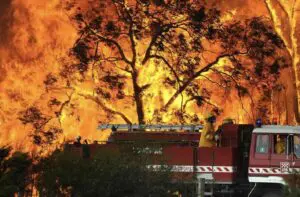Reduced demand, and the need to reduce carbon emissions, continues to have a dramatic impact on Australia’s coal-fired generators, with one of Queensland’s largest, the Tarong power station, forced to close half of its 1,400MW capacity.
The decision was announced late last week by the government-owned Stanwell Corp, which provides around half of the generation in the state. Managing director Dennis Franklin said the decision to close two units came about because of an over-supplied energy market, caused by lower than forecast electricity demand.
“With these market conditions expected to continue for at least the next two years, withdrawing two units from service at (Tarong) will allow Stanwell to lower its operation and maintenance costs and reduce its carbon emissions,” he said in a statement.
The decision is yet another clear sign of the fundamental change that is being brought about in the Australian energy market – a situation that has been accelerated by the introduction of the carbon price, the build-out of large scale renewables, the impact of the surge in rooftop solar installations, and changing demand patterns.
The scope of lower demand was officially recognised by the Australian Energy Market Operator in June, when it highlighted the fact that energy demand across the country the National Electricity Market was 5.7 per cent lower than forecast in 2011/12 because of the combined effect of energy efficiency measures, solar PV, and lower manufacturing.
Demand in Queensland has fallen for two years running, and the state had the biggest downgrade in energy forecasts. Its energy demand had been expected to grow at 4.1 per cent a year over the next decade, the strongest in the country, but its forecasts have been revised down to 2.9 per cent a year, which some think is still optimistic. Its peak demand projection for summer in 2012/13 is a whopping 17 per cent below its 2011 forecasts.
But the full extent of the excess capacity was revealed in Stanwell Corp’s own annual report. It noted that on average during 2011/12, the state had 4,500MW of capacity more than it needed. Which was another way of saying that its entire 4,000MW portfolio of mostly coal and gas fired generation was surplus to requirements for much of the year.
Indeed, its coal fired generators averaged little more than 60 per cent capacity, and that was only because they exported at least 10 per cent of their power to NSW. Needless to say, the state’s electricity consumers have been paying for that excess capacity in some form or another, and for the network upgrades that have accompanied it.
AEMO says there is such a surplus in capacity in the state that it expects there will be no need for any new baseload plant in the next decade. Some private experts predict there will never be any need for such capacity. TRUenergy, which had planned 1,500MW of baseload and intermediate gas-fired generation in Queensland, has now put those plans on hold, and Stanwell Corp has also cancelled a planned 504MW power station that would have used “gassified” coal as a fuel source.
The closure of the two units at Tarong follows the closure of the ageing 600MW Munmorah power station in NSW, Stanwell’s 125MW Swanbank B power station in Queensland, and the 240MW Playford B and the 520MW Northern brown coal generators in South Australia. Energy Brix has also reduced output. Northern recently reopened and will operate in the immediate future only in summer, when demand is higher.
Most of these power plants are being closed because they can no longer compete with other generators, either because they have particularly high emissions, or higher costs and are victims of the so-called “merit order” effect, which is being exacerbated by falling demand and increased renewables. That in turn, has pushed wholesale electricity prices lower, and pricing regulators in South Australia and NSW are now acting to ensure these falls are passed on to consumers.
As Pitt&Sherry noted in their latest update last week, black coal generation has fallen significantly in recent months, and brown coal generation is also starting to be impacted, with a corresponding fall in emissions. It estimated that the average capacity factor for coal fired generators in Queensland in the last 12 months was just 55 per cent.
Tarong was closed because it was the easiest option for Stanwell. It uses coal from its own mine, so it can reduce consumption without any penalty. Closing those two units, means that the capacity factor at the other units can be lifted. The company expects a $400 million bill from the carbon price, although it said in its annual report that it was well placed to meet that challenge.
Interestingly, Tarong is also playing host to a carbon capture and storage project run by the CSIRO, as well as a pilot facility using algae to capture emissions, which is being operated by MBD Energy.
Addendum: In the US, the closure of coal-fired generation is happening at a rapid rate. According to this report, coal plants are closing down “faster than American Airlines terminals”, thanks to the plunging cost of natural gas, boots-on-the-ground campaigns from anti-coal activists, and, to a lesser degree, the ambiguous specter of EPA pollution regulations.
It noted that just a few months ago, the Brattle Group released a study that showed that 30 GW of coal power was likely to be retired by 2016. The researchers have just updated their report: Now they think it’ll be 59-77 GW that goes down. As David Roberts notes over at Grist, that’s 20-25% of the United States’ entire coal fleet in just a few years.





